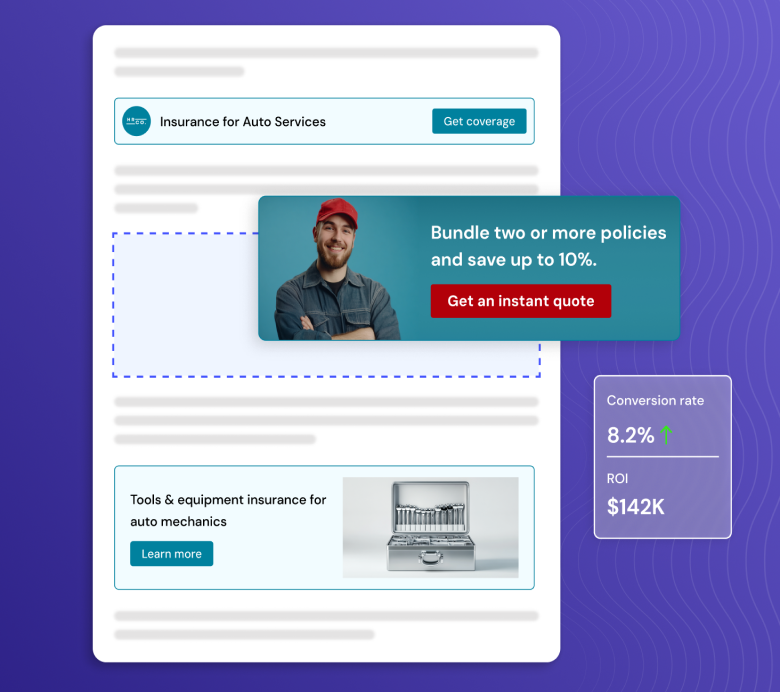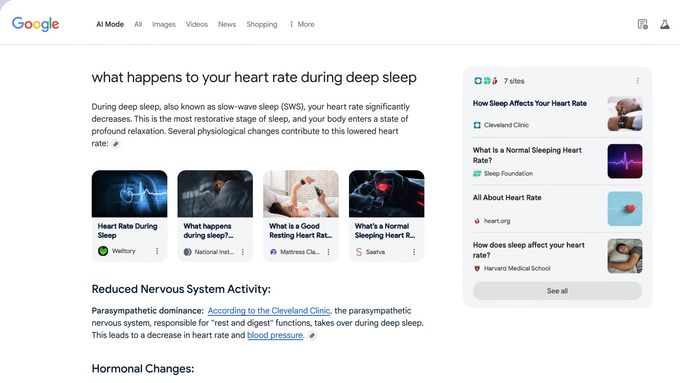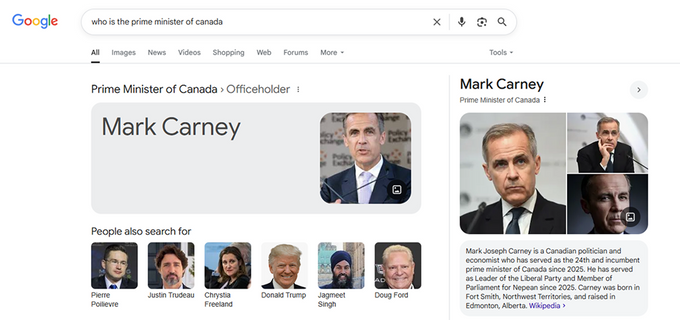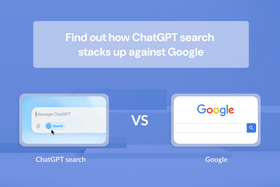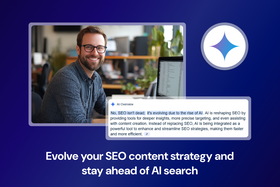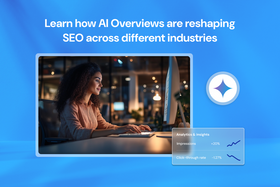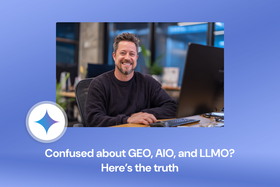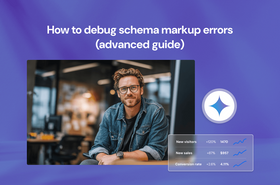Zero-click searches: What this means for your SEO strategy
Zero-click searches are reshaping the SERP, but they’re not killing SEO. To stay visible, shift your strategy from chasing clicks to building authority and brand awareness.
Updated July 18, 2025
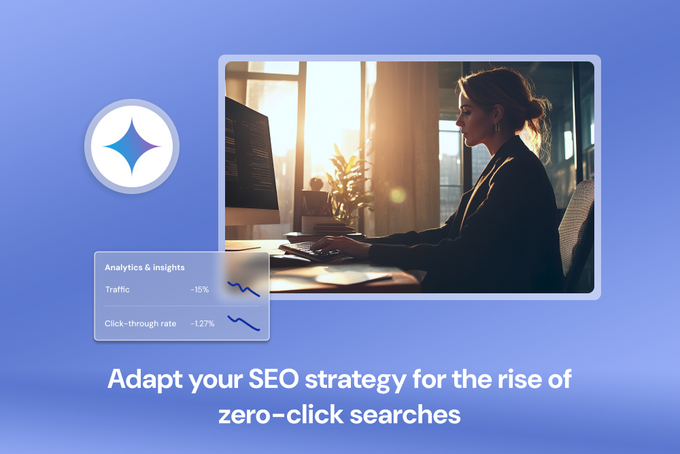
Search is evolving fast—AI Overviews, AI Mode, and other generative features are reshaping how users get answers, and SEOs are feeling the impact.
One of the biggest shifts is zero-click searches. According to a SparkToro report, just under 60% of searches end without a single click—and that’s not even counting voice search.
As these frictionless experiences grow, it’s becoming harder to earn traffic through traditional ranking tactics. But that doesn’t mean SEO is dead. It just means we need to rethink how we show up in search and add value, even when users don’t land on our site.
In this article, I’ll break down what zero-click searches are, why they matter for your SEO strategy, and how you can still win visibility, even when users never leave the SERP.
Key takeaways
- Zero-click searches are answered directly in the SERP without clicking through to a website.
- While they reduce clicks, zero-click features still offer major visibility and brand exposure.
- To win zero-click searches, focus on content quality and structure, search intent, topical authority, and strong branding across channels.
- Prepare for the next era of search by building a brand that's consistently associated with your niche and audience.
What are zero-click searches?
Zero-click searches are search queries that are answered directly on the SERP, so the user doesn't need to click through to a website to get what they need.
These often appear in the form of featured snippets, knowledge panels, People Also Ask (PAA) boxes, or AI-generated overviews—essentially any format that provides immediate, self-contained information.
Take the query “how deep is the Mariana Trench” as an example.
The search results include:
- An AI Overview at the top
- A featured snippet from Wikipedia
- A PAA section with related questions and drop-down answers
- A knowledge panel with visuals and key facts
- A carousel of short videos
This is a textbook zero-click search. Google presents multiple ways for users to get a complete answer without clicking a single link. The information they need is clearly stated right in the SERP, supported by trusted sources and multimedia—making the user’s job incredibly easy and leaving little incentive to explore further.
Note: Zero-click mode isn't limited to Google. Social media platforms, for example, do everything they can to keep users on-platform and penalize reach when a link is shared. So in many ways, all platforms are moving in the same direction.
» Learn more about Google's AI-powered search experience.
How do zero-click searches affect SEO?
Zero-click searches are quickly becoming the norm. In fact, a recent survey found that 80% of consumers now rely on zero-click results in at least 40% of their searches, reducing organic web traffic by an estimated 15% to 25%. And with the rise of AI Overviews, featured snippets, and tools like Gemini, ChatGPT, and Perplexity giving users direct answers instantly, the number of no-click interactions is only climbing.
Clicks to Google’s top results have been declining since 2023, when Google introduced new SERP features like image packs and video carousels. But the tipping point came in 2024, with the rollout of AI Overviews and now AI Mode.
These new interfaces offer more complete, interactive answers right on the page, pulling users further away from traditional website visits. As a result, clicks and organic traffic have declined. And in my opinion, there’s no turning back to the old 10 blue links.
So what does this mean for SEO?
First, traffic for traffic’s sake is no longer a reliable metric. Traffic is doomed to die and be reduced dramatically. Honestly, we should've never optimized for traffic alone, but for the value this traffic brings.
In other words, SEO success today means optimizing for value, whether that’s conversions, engagement, or brand visibility across the entire web.
To adapt, SEOs must:
- Build a recognizable brand: This goes beyond SEO tactics alone. You need to show up consistently across social media, PR, podcasts, citations—anywhere your audience spends time.
- Understand the user journey: Regularly research what your users care about and how they discover information. Their behavior is evolving fast.
- Cover topics within your niche comprehensively: Focus on content that demonstrates expertise across the entire SEO funnel. That includes long-tail keywords, original research, and value-driven assets like templates, quizzes, and downloads.
- Adopt an omnichannel approach: Distribute your content across different platforms and formats. Show up wherever your audience spends their time.
- Maintain consistency: Be consistent everywhere on the web so MLLs can retrieve accurate information about your brand, product, and services when responding to users' questions.
- Make your content accessible to AI tools: Ensure your content is crawlable and rendered in HTML. Many AI models don’t process JavaScript and will miss your content if it’s not directly in the page source.
- Rethink how you track success: Companies need to overhaul how they measure impact, from tracking and attribution to SEO goals and OKRs for each channel.
Ultimately, this is a redefinition of how search works—and we have to meet users where they are, not where we wish they were.
7 types of zero-click search results
To understand how zero-click searches affect your strategy, you need to know where those zero-click interactions are happening. Today’s search results are designed to keep users on the platform, and they do it through a growing list of SERP features that provide instant answers—many of which are now AI-generated.
Here are the most common types of zero-click search results.
1. AI Mode
AI Mode is Google's newest search experience. It's designed for “power users” who want to interact with search like a conversation. Using Gemini 2.5, AI Mode enables users to ask more nuanced or complex questions, compare options, explore topics in depth, and follow up with additional queries.
Here's what it'll look like:
What makes AI Mode unique is its multistep “query fan-out” technique. It issues several related searches simultaneously across subtopics, draws in real-time data from the Knowledge Graph, product feeds, and other sources, and returns a consolidated, easy-to-digest answer, often with links to relevant content.
For SEOs, this means even fewer clicks, but potentially higher exposure if your content is part of that high-quality data retrieval process.
While AI Mode isn't available globally yet, its existence signals the direction Google is heading: toward search as an AI-first search and discovery experience that prioritizes speed, convenience, and depth over clicks.
SEE ALSO: What is Google Search Perspectives?
2. AI Overviews
Besides AI Mode, Google’s AI Overviews are the most transformative zero-click feature yet. They combine data from multiple sources to generate an in-SERP response powered by generative AI.
They look like this:
For SEOs, AI Overviews are a double-edged sword: they can dramatically reduce traffic by providing all the information users need upfront, but they also present an opportunity to be cited and gain brand exposure—especially if your content is comprehensive, technically optimized, and consistently visible across the web.
» Learn how AI Overviews impact search performance for B2B vs. B2C sites.
3. Featured snippets
Featured snippets are one of the oldest and most recognizable zero-click formats. They pull a concise excerpt from a webpage to answer a query at the very top of the SERP, like in the example below.
While this can reduce clicks (especially for simple queries), appearing in a featured snippet can still build authority and increase brand awareness.
4. Knowledge panels
Knowledge panels present structured information about entities like people, organizations, or topics. These often pull from authoritative sources like Wikipedia or Google’s Knowledge Graph.
Knowledge panels look like this:
While difficult to influence directly, appearing in or being cited within a knowledge panel can help reinforce credibility and brand authority. Again, it’s about showing up consistently online—if Google’s data sources recognize you, users are more likely to trust and remember you.
5. Direct answer boxes
Also called “instant answers,” these are short, factual responses—such as dates, definitions, or statistics—usually pulled from a trusted source.
Like this:
These are the epitome of zero-click: they satisfy the query instantly.
While there's little opportunity to earn clicks from these, brands that can associate their name with reliable data and definitions may still benefit from indirect exposure.
6. People Also Ask (PAA)
The PAA box is a dynamic section that expands to reveal answers to related questions, such as in the example below.
It offers a broader surface area for visibility and can sometimes show answers from the same domain multiple times.
Being featured here helps reinforce topical authority and increases your chances of repeated brand exposure across the SERP. But like the others, it works best when it’s part of a multi-touchpoint brand strategy, not a siloed SEO tactic.
7. Local packs
Local packs dominate the SERP for location-based queries, showing a map and three top local business listings.
They look like this:
These are critical for local SEO visibility but are also becoming increasingly zero-click—users often get all the info they need (like reviews, hours, directions) without visiting your site. Ensuring your local listings are accurate, up-to-date, and rich with visuals and reviews is essential for staying competitive here.
» See how ChatGPT search compares to Google.
How to win zero-click searches
Should brands try to rank in zero-click features like featured snippets or AI Overviews? Yes—if that’s where your audience turns for answers. And in most cases, it is.
That’s why the goal isn’t just to appear in these formats but to design your entire SEO and brand strategy around how people search, learn, and build trust today.
» Find out if there's a difference between GEO, AIO, and LLMO.
1. Build brand awareness across channels
Zero-click searches offer high visibility, but that visibility doesn’t always translate into traffic. To make them count, users need to recognize your brand before and after they see you in the SERP.
That starts with brand consistency. Your messaging, visual identity, and value proposition should show up the same way across every platform—whether it’s a blog post, a LinkedIn video, or an industry forum comment.
LLMs, including Google’s AI Mode, increasingly surface content and recommendations based on brand-category associations and recurring patterns across the web. If your brand is consistently mentioned alongside your core topics and ICPs, you’re far more likely to be featured.
That’s why it's not enough to rely on SEO alone. Diversify your marketing mix to grow brand mentions, citations, and recognition across video, social, email, and other channels. The more often people—and algorithms—encounter your brand in the right contexts, the more likely you are to show up when it matters.
» Learn more about the power of branding.
2. Structure content to serve both users and machines
LLMs like Google’s Gemini prioritize content that’s clear, direct, and contextually rich. That means structuring your content in a way that machines can easily interpret and use.
Your content should be:
- Chunked into concise sections that AI can use as standalone answers
- Organized logically with headings and scannable formatting
- Enhanced with tables, graphs, and listicles that clarify comparisons
- Written with contextual cues and NLP-friendly phrasing (grouping related entities and terms together)
Zero-click features often favor content that directly mirrors how users phrase their questions, so anticipate common queries and write accordingly.
SEE ALSO: Are llms.txt files the missing link in AI-powered SEO?
3. Build topical authority
Instead of chasing isolated snippets or keywords, focus on covering the full scope of your topic. Build content clusters that go beyond a single question to address the entire conversation around it.
To do that, you need to understand your users’ intent at every stage of their journey and anticipate what they’ll want to know next. As search becomes more conversational, your content needs to reflect that: answering nuanced questions, branching into related subtopics, and offering clear, logical paths for deeper exploration.
This approach signals to Google that your site is a trusted source of comprehensive, authoritative information, making it more likely to be featured in zero-click search results.
Internal linking plays a critical role here, too. It helps guide both users and search engines through your content ecosystem, which can reinforce your authority in a specific niche.
4. Trim irrelevant content from your site
Maintaining topical depth also means pruning what no longer serves your goals. Trim outdated, irrelevant, or thin content—especially pages that aren’t aligned with your core offerings or audience.
This improves content quality signals, sharpens your topical focus, and reduces noise for search engines trying to assess what you’re truly an expert in.
» Spot irrelevant content with a content audit.
5. Reinforce trust signals (E-E-A-T) everywhere
Zero-click features often surface content from brands that users (and algorithms) already trust. That trust is built through reputation, reviews, consistent messaging, and visibility on authoritative third-party websites.
To increase trust:
- Invest in PR and brand mentions on reputable sites
- Ensure authorship transparency and subject-matter expertise
- Highlight real-world experience (especially in YMYL categories)
- Keep branding and tone consistent across all touchpoints
These signals help search engines associate your brand with specific topics and audiences, and make it easier for your content to be pulled into AI summaries and answers.
6. Make the content worth the click
Even in a zero-click world, there are still opportunities to earn traffic. But only if your site offers more than what’s available in the SERP.
Give users a reason to click by creating:
- Interactive tools
- Research reports
- Downloadable templates
- Deeper guides or tutorials
Focus on mid- and bottom-funnel keywords. These queries are more likely to lead users to your site if they see you as the best source for the next step in their journey.
READ MORE: How to create content for the SEO conversion funnel
7. Offer a great site experience
Visibility in zero-click results is only half the battle—what users experience after they click matters just as much. Eliminate friction across the user journey with clear navigation, strong UX and UI design, and mobile-optimized, fast-loading pages.
Users should be able to easily find what they need, engage with your content, and take the next step toward conversion—whether that’s downloading a resource, signing up, or exploring related topics.
8. Expand into emerging markets (if relevant)
Finally, consider market expansion. Google’s AI features roll out to English-language markets first (particularly the US). If your business operates internationally, there may still be more traditional SERPs—and more organic traffic—available in non-English-speaking regions.
» Learn more about the impact of AI on SEO.
Preparing for the next era of search
As zero-click results become more common, it's easy to feel like SEO is losing ground—but the truth is, user needs haven’t changed. People still turn to search engines to solve problems and make decisions. What has changed is how those answers are delivered.
To thrive in this new landscape, SEOs need to move beyond short-term tactics and focus on long-term equity. That means building a recognizable, trusted brand. For years, Google has said to “focus on building a brand,” and only now does that advice fully click.
Establish strong associations between your brand and your niche, show up consistently in multiple channels, and create high-converting content that reflects who you are, what you do, and who you serve.
READ MORE: Generative engine optimization: What it is & how to do it
